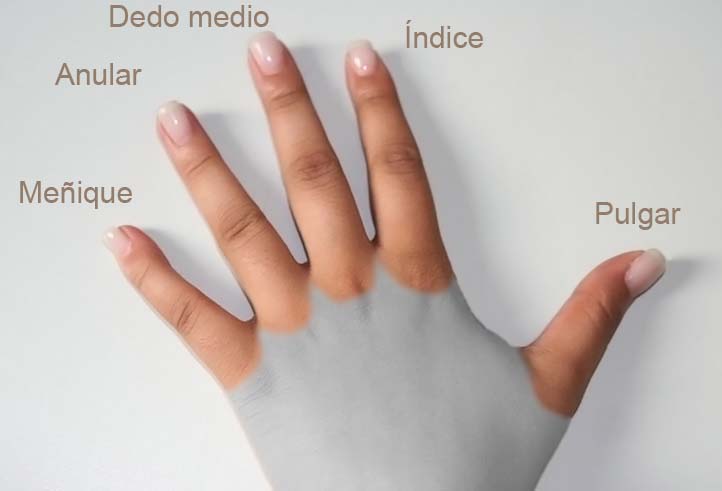60 Capítulo 6: Sección 1: La salud y el cuerpo humano
Section Goal
In this section, students will learn vocabulary about the human body, illnesses, and symptoms.
Vocabulario

Las partes del cuerpo
- La cara – the face
- Los ojos – the eyes
- Las orejas – the ears
- La nariz – the nose
- La boca – the mouth
- La cabeza – the head
- El cuello – the neck
- La espalda – the back
- El brazo – the arm
- La mano – the hand
- La muñeca – the wrist
- El hombro – the shoulder
- La cadera – the hip
- La pierna – the leg
- La rodilla – the knee
- El tobillo – the ankle
- El pie – the foot
- Los dedos – fingers
- Los dedos del pie – toes
- La barbilla – chin
- La ceja – eyebrow
- El codo – elbow
- La frente – forehead
- La mejilla – cheek
Los órganos y las partes internas del cuerpo
- La garganta – the throat
- Los oídos – the ears
- El estómago – the stomach
- El abdomen – the abdomen
- La panza – the tummy
- El corazón – the heart
- Los pulmones – the lungs
- Los huesos – the bones
- La sangre – the blood
- La piel – the skin
- El cerebro – brain
- El hígado – liver
- La lengua – tongue
- Los riñones – kidneys
Talking about the body
Note that when talking about parts of the body, Spanish differs from English. In English, we generally use possessive pronouns to talk about body parts. In Spanish, we use the definite article, often in conjunction with indirect or reflexive pronouns.
For example:
- My head hurts.
- Me duele la cabeza.
- He broke his foot.
- Se rompió el pie.
Other examples:
- Se puso una curita en el dedo. / She put a Band-Aid® on her finger.
- El médico me examinó los ojos. / The doctor examined my eyes.
- Saqué la lengua. / I stuck out my tongue.
Los síntomas, las enfermedades y las heridas.[1]

- El dolor (doler [ue]) – pain (to hurt)
- El catarro, el resfriado – a cold
- Cortar(se) – to cut (oneself)
- El estornudo (estornudar) – (to) sneeze
- La fiebre – fever
- La gripe – flu
- La herida – wound
- La infección – infection
- La jaqueca – migraine
- Lastimar(se) – to hurt (oneself)
- La náusea – nausea
- Quemar(se) – to burn (oneself)
- Romper(se) – to break
- Tener alergia (a) – to be allergic (to)…
- Tener dolor de cabeza – to have a headache
- Tener dolor de espalda – to have a backache
- Tener dolor de garganta – to have a sore throat
- La tos (toser) – cough (to cough)
- El virus – virus
En el consultorio médico
- El chequeo médico – physical, checkup
- La cita – appointment
- La sala de espera – waiting room
- Examinar – to examine
- ¿Qué le duele? – What hurts?
- ¿Qué síntomas tiene? – What are your symptoms?
- Me duele… (la garganta) – My (throat) hurts
- Me duelen… (los pies) – My (feet) hurt
- Sacar la lengua – stick out one’s tongue
- Poner una vacuna – give a vaccine
- Tomar la presión (a alguien) – take (someone’s) blood pressure
- Tomar la temperatura (a alguien) – take (someone’s) temperature
- Tomar una radiografía – take an X-ray
Los tratamientos médicos

- El antiácido – antacid
- El antibiótico – antibiotic
- La aspirina – aspirin
- La cirugía – surgery
- Comer alimentos nutritivos – eat healthy foods
- Curar – to cure
- La cura – the cure
- La curita – adhesive bandage (Band-Aid®)
- Guardar cama – to stay in bed
- El jarabe (para la tos) – (cough) syrup
- Mejorar(se) – to improve, to get better
- Poner una inyección (a alguien) – give an injection (to someone)
- Recetar algo- prescribe something
- La venda (vendar) – bandage (to bandage)
- El yeso – cast
Otras expresiones sobre enfermedades
- ¿Qué le duele?
- Me duele(n) el/la/los/las (parte del cuerpo).
- The verb doler works similarly to gustar.
- Me duele el estómago / My stomach hurts.
- Le duelen los hombros / Her shoulders hurt.
- Me duele(n) el/la/los/las (parte del cuerpo).
- Lastimarse
- Enfermarse
- Vomitar
- Sentirse mejor/peor/igual/adj.
- ¡Que te sientas mejor!
- Rompérsele el/la/los/las (un hueso)
Actividad 3. Los síntomas

Instrucciones: Lee las descripciones de cómo se sienten o qué hacen las diferentes personas e indica qué síntoma, enfermedad o herida probablemente tienen.
- Tiene un resfriado.
- Tiene náusea.
- Se rompió el brazo.
- Se quemó.
- Tiene fiebre.
- Se cortó el dedo.
- Esteban tiene frío.
- Juana tiene dolor de estómago.
- Pedro estornuda mucho.
- Angela necesita curita.
- Tomás se pone Neosporin®.
- A Paola le pusieron un yeso.
Actividad 4. ¿Qué medicina tomas?
Instrucciones: Usando oraciones completas, di qué medicina tomarías si tienes los siguientes síntomas. Puedes usar palabras de nuestro vocabulario, marcas o remedios caseros (home remedies).
Modelo: Tengo dolor de estómago. Tomo antiácido.
- Tengo tos.
- Tengo fiebre.
- Tengo dolor de espalda.
- Tengo una infección de oído.
- Estoy maread@.
- Estoy resfriad@.
- Tengo alergias temporales (seasonal allergies).
Actividad 5. Los remedios caseros
Instrucciones: Mira el video y después menciona si tu familia tiene remedios caseros que te ayudan cuando estás enfermo.
Escribe tres oraciones.
Actividad 6. Preguntas personales
Instrucciones: Mira el video y después escucha el audio para poder responder las preguntas sobre tu salud.
- ¿Cuándo te enfermas? Me enfermo cuando:
- ¿Eres alérgic@ a algo? ¿A qué?
- ¿Vas al médico cada año para un examen médico?
Actividad 7. Asociaciones
Instrucciones: ¿Qué parte del cuerpo asocias con los siguientes síntomas o enfermedades?
Modelo: Jaqueca: La cabeza
- Un resfriado:
- La gripe:
- Una fiebre:
- Las alergias:
- La tos:
- El dolor:
Media Attributions
- Dedos_de_la_mano
- "¡Bienvenidos!: Capítulo 12: ¿Te sientes bien? / Body and Health" by Julia Farmer Jeff Zamostny Laura Hill Stephanie Henderson Hollenbeck is licensed under CC BY 4.0. ↵

